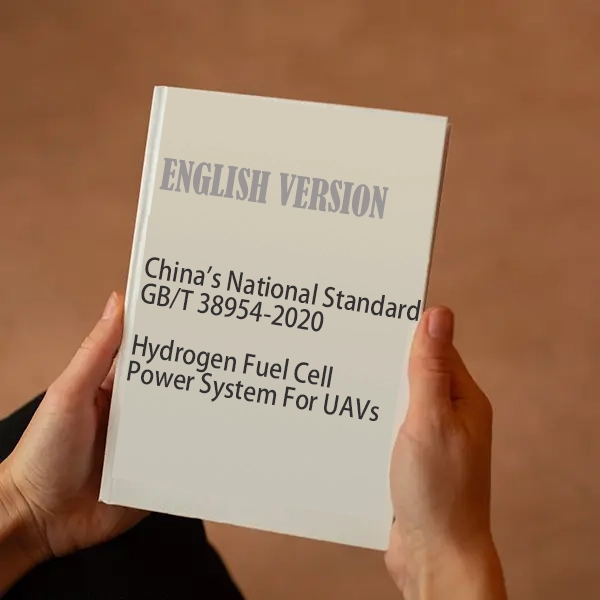Hydrogen fuel cells have the potential to revolutionize clean energy. But how do they actually work, and what makes them different from other energy sources?
Hydrogen fuel cells generate electricity through an electrochemical reaction1 between hydrogen and oxygen. The process produces electricity, water, and heat as outputs, making it a sustainable alternative to fossil fuel-powered systems.

How Do Hydrogen Fuel Cells Generate Electricity?
The fundamental process behind hydrogen fuel cells is quite simple but incredibly powerful. By breaking down hydrogen molecules, fuel cells generate electricity through an electrochemical reaction.
Hydrogen fuel cells work by splitting hydrogen molecules into protons and electrons. The electrons travel through an external circuit to generate electricity, while the protons move through a membrane to combine with oxygen to form water. This creates a clean and continuous flow of energy.
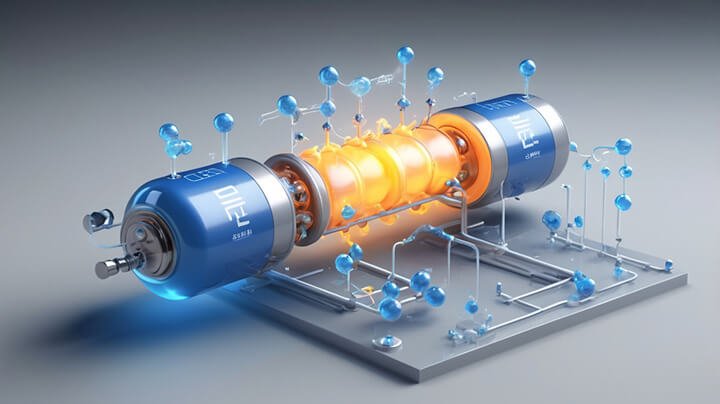
Is the hydrogen fuel cell process safe and efficient?
Yes, hydrogen fuel cells are highly efficient and can operate continuously as long as hydrogen is available. This makes them ideal for applications where long-duration power is essential, such as in UAVs or electric vehicles.
FAQ
-
❓ What does a hydrogen fuel cell produce?
✔️ It produces electricity, water, and heat. -
❓ Can hydrogen fuel cells work without oxygen?
❌ No, oxygen is required to complete the electrochemical reaction.
What’s the Only Byproduct of a Hydrogen Fuel Cell?
The only byproduct of hydrogen fuel cells is water. Unlike conventional energy systems, hydrogen fuel cells don’t emit harmful pollutants such as carbon dioxide or nitrogen oxides. This makes them an environmentally friendly energy solution.
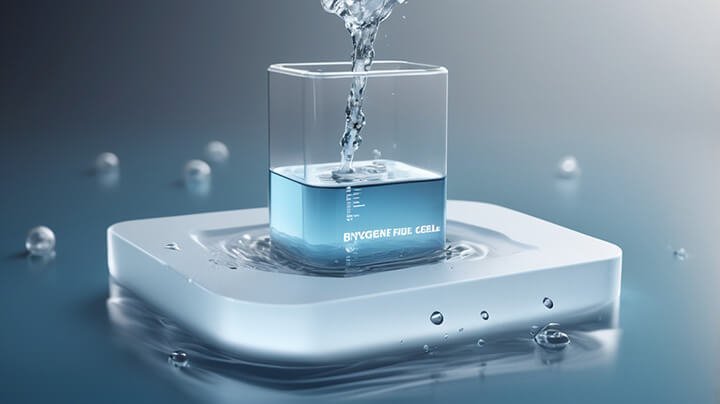
Why is water the only byproduct?
This is because the hydrogen atoms combine with oxygen from the air to form water in the fuel cell. This simple reaction makes hydrogen an incredibly clean energy source.
FAQ
-
❓ Do hydrogen fuel cells pollute the environment?
✔️ No, they only produce water as a byproduct. -
❓ Is hydrogen safe for the environment?
✔️ Yes, hydrogen is a clean energy source with no harmful emissions.
What’s the Lifespan of a Hydrogen Fuel Cell?
Hydrogen fuel cells generally last between 5,000 to 10,000 hours of use, depending on their type and application. However, advancements in technology are continuously improving their durability and efficiency.
The lifespan of hydrogen fuel cells can vary based on their usage. Factors like temperature, load, and fuel quality influence their longevity. Research and innovation are helping to increase this lifespan, particularly for high-demand applications like drones and vehicles.
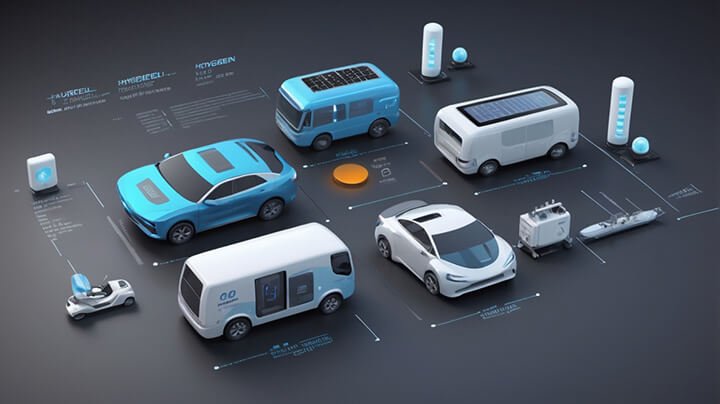
FAQ
-
❓ How long can a hydrogen fuel cell last in a car?
✔️ It can last up to 10 years, depending on usage. -
❓ Does the lifespan of a hydrogen fuel cell depend on usage?
✔️ Yes, the more frequently the cell is used, the shorter its lifespan can be.
Key Advantages of Hydrogen Fuel Cells
Hydrogen fuel cells offer several key advantages over traditional energy sources. They provide high energy density, longer operation times, and faster refueling.
Hydrogen fuel cells are more efficient than lithium-ion batteries because they store energy in a highly compact form, making them ideal for large-scale applications like buses, trucks, and even drones.
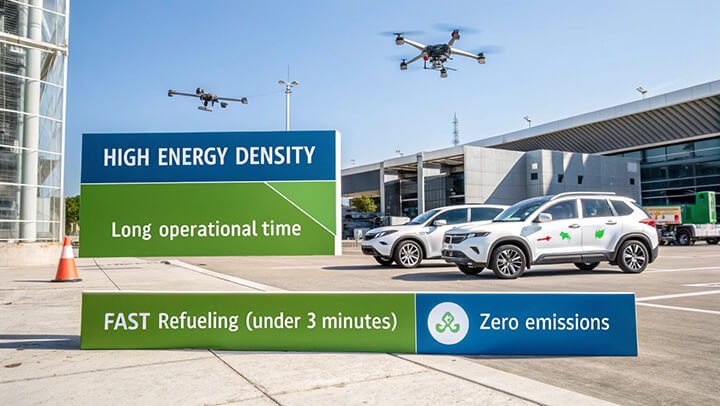
FAQ
-
❓ Are hydrogen fuel cells better than batteries?
✔️ Yes, they offer higher energy density and longer operational times. -
❓ Do hydrogen fuel cells require a lot of maintenance?
❌ They generally require less maintenance than conventional combustion engines.
The Biggest Challenge Facing Hydrogen Fuel Technology
Despite the promise of hydrogen fuel cells, several challenges must be addressed. One of the biggest issues is the lack of widespread infrastructure for hydrogen refueling2 stations. Without adequate refueling facilities, hydrogen-powered vehicles and drones can’t operate efficiently at scale.
Storage and transportation of hydrogen are also problematic. Since hydrogen is highly flammable and needs to be stored at high pressures or low temperatures, ensuring its safe and efficient handling remains a significant challenge.
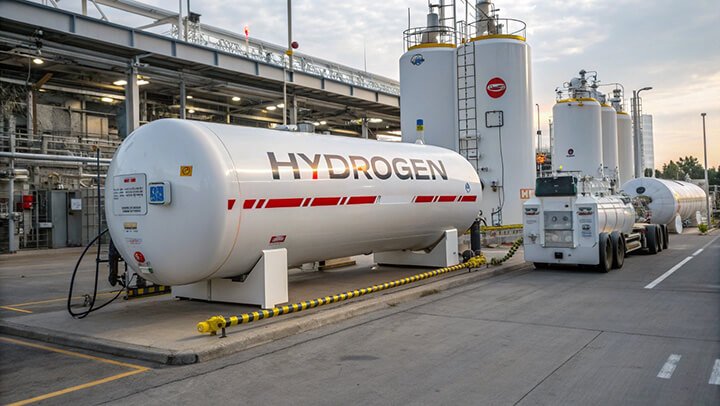
FAQ
-
❓ Is the infrastructure for hydrogen refueling adequate?
❌ No, it is still limited and in the early stages of development. -
❓ Is hydrogen difficult to store?
✔️ Yes, hydrogen requires high pressure or low temperature storage, which presents challenges.
Major Drawbacks of Hydrogen Fuel Cells
Hydrogen fuel cells are not without their drawbacks. The biggest issue is the cost of production. Producing hydrogen fuel cells requires expensive materials, such as platinum, and the processes involved are energy-intensive.
Additionally, the infrastructure for hydrogen production, distribution, and storage is still underdeveloped in many regions, which hinders widespread adoption. However, as technology advances, these challenges may be reduced.
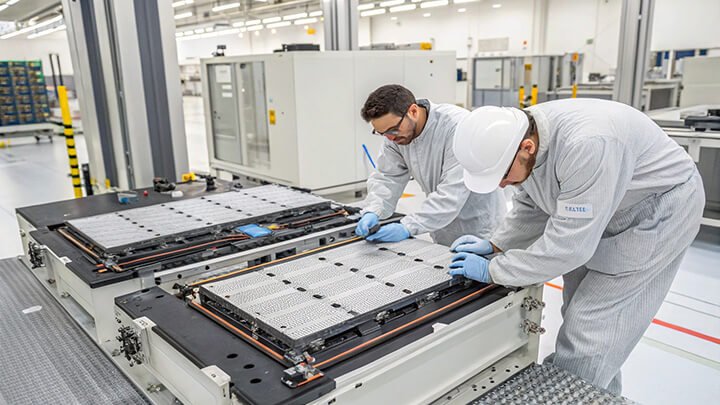
FAQ
-
❓ Are hydrogen fuel cells too expensive?
✔️ Yes, they are still expensive compared to conventional energy systems. -
❓ Can hydrogen fuel cells become cheaper over time?
✔️ Yes, as production scales and technology improves, costs are expected to decrease.
Why Elon Musk Is Skeptical About Hydrogen Fuel Cells
Elon Musk has been vocal about his skepticism towards hydrogen fuel cells. He believes that hydrogen fuel cells are inefficient and not a viable long-term solution. Musk argues that electric vehicles powered by batteries are a more practical and scalable solution.
Musk also points out the challenges with hydrogen storage and infrastructure as significant barriers that hydrogen fuel cells must overcome to be a mainstream alternative to batteries.
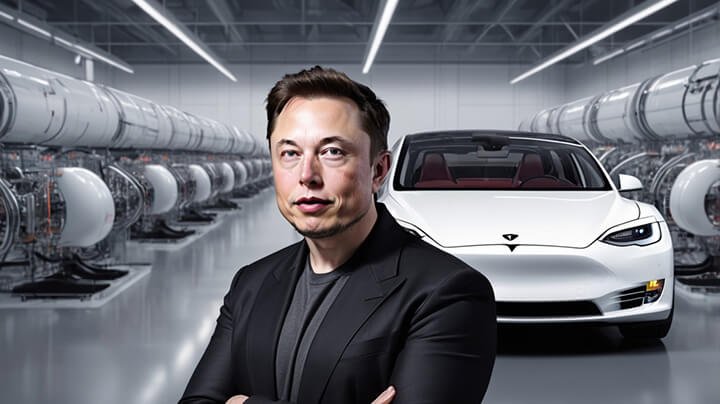
FAQ
-
❓ Does Elon Musk support hydrogen fuel cells?
❌ No, he has consistently expressed skepticism about their potential. -
❓ Is there a better alternative to hydrogen fuel cells1?
✔️ Musk advocates for electric vehicles with battery storage.
Conclusion
Hydrogen fuel cells present an exciting future for clean energy, but they face significant hurdles in terms of infrastructure and cost. While they offer excellent advantages in terms of energy efficiency and environmental impact, continued innovation and investment are necessary to address their challenges.


